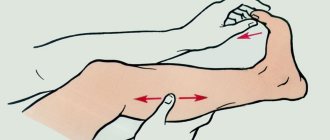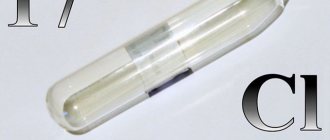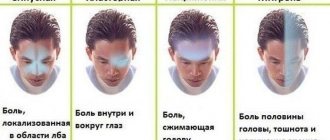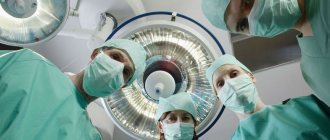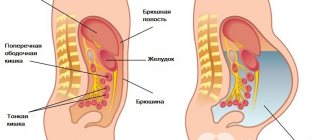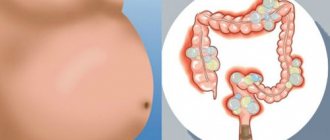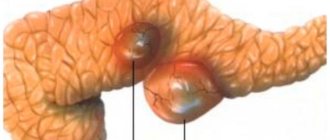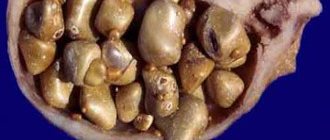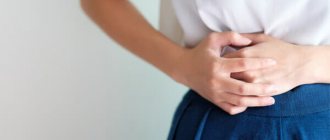Pain in the elbow joint - causes of inflammatory nature
The structure of the elbow joint is quite complex. It is represented by 3 small joints with a common capsule - radioulnar, humeroulnar, humeroradial. Rotation and other movements are provided by muscles that are attached by tendons. The articular capsule is fixed by four ligaments, fed by blood vessels, and innervated by a number of nerve trunks. If the elbow joint hurts, the reasons may lie in damage to any of the specified areas.
Why do the joints in my elbows hurt? This is often associated with various inflammatory processes:
- Arthritis. Inflammation of the joint can be of an infectious nature, but sometimes it is a consequence of systemic diseases - rheumatism, psoriasis, lupus erythematosus. Only when bacteria directly penetrate the joint from the outside does it suffer alone. In other cases, sensations appear on both hands or cover other joints. Arthritic pain in the elbow joint is usually constant and occurs with movement and at rest.
- Epicondylitis. The disease combines inflammatory and degenerative phenomena at the site of attachment of tendons to bones. Epicondylitis severely impairs the function of the elbow. The disease is characterized by pain in the elbow during exertion, as a result of carrying heavy objects, due to rotational movements, and playing sports.
- Bursitis. This is inflammation of the elbow bursa - one or more. With bursitis, a person may notice a small swelling on the elbow, and the pain is usually sharp, irritating, and intensifies when the hand is overcooled. Bursitis develops after injuries, falls on the upper limb.
- Tendinitis. It is an inflammation of the tendons of the elbow joint. Appears most often in athletes and people engaged in physical labor. The skin in the painful area swells, turns red, and is hot to the touch.
- Diffuse fasciitis. When the fascia becomes inflamed, the pain is nagging and not severe, while the skin loses its tone and the muscles gradually atrophy (if treatment is not started). In the acute phase of the disease, elbow mobility is seriously impaired.
Traumatic causes of discomfort
Pain in the elbow joint may be associated with injury to this area. People fall on their elbow quite often, especially in winter. The cause can also be car accidents, household and sports injuries. Most often, bruise and dislocation of the joint are observed. If the cause of the first pathology is a direct blow to the elbow, then the second is associated with improper movement of the elbow, as a result of which part of the ligaments is torn or even torn off. The joint capsule may remain intact or become damaged. Dislocations happen:
- In front of them;
- Lateral;
- Rear.
Children often experience elbow pain due to subluxation of the radial head. The sensations are sharp, sudden, movements in the joints of the bones are severely limited. A bone fracture in this area can also cause severe pain. The intensity of the syndrome depends on the force of compression of the nerves and vessels located nearby. A distinctive feature of a fracture is a crunch at the moment of its occurrence. After this, the hand stops “obeying” and may even become motionless.
Other traumatic reasons why elbows hurt include:
- Ischemic contracture. It is a complication of a fracture and is caused by damage to the arteries. Symptoms are acute pain, pale skin of the hand, coldness of the skin, swelling of the fingers, loss of pulse.
- Tendon rupture. Usually in this case the biceps suffers. Hand movements are immediately impaired, swelling increases, and pain is severe. The muscle becomes asymmetrical in appearance compared to the healthy arm.
Types of painful symptoms
The types of pain in the elbow are as follows:
- Referred pain. Present in disorders of the musculoskeletal system, in particular in cervical osteochondrosis. The development of atrophic syndrome of the biceps muscle is possible. It often causes numbness in the fingers. The nature of the pain is nagging.
- Projected. Appears when spinal nerves are compressed, with a herniated disc or after an injury.
- Pulling.
- Neuropathic. It is provoked by inflammation of the nerve endings in the presence of arthrosis or due to a bruise. When bending, a sharp pain is felt, accompanied by a burning sensation when straightening.
- Spicy. Mainly appears with injuries, bursitis or arthritis. Very strong, sharp, limits physical activity.
- Burning. Appears during inflammatory processes or when nerve endings are compressed. In this case, straightening the arm causes an intolerable burning sensation in the joint.
- Dull and aching. Talks about chronic diseases such as arthrosis and bursitis. It is constantly present, even when the hand does not move, but becomes stronger at the moment of flexion and extension.
Aching pain - other causes
If any elbow joint hurts, and injuries and inflammation are excluded, this may be a symptom of arthrosis. This degenerative disease occurs most often after 50 years of age, but with certain work or other conditions, the elbow joint can wear out faster. The cartilage tissue becomes thinner, the joint space becomes narrower, so bone movements cause pain. Usually the right joint begins to suffer first, and later the second one becomes affected.
The following pathologies are more rare:
- Malignant tumor. In addition to the pain syndrome - persistent, constant, increasing over time - a person also exhibits general symptoms. He loses weight, body temperature may rise, fatigue and weakness are observed. The tumor is almost always noticeable visually, because it grows quickly. Sometimes the first sign is a spontaneous fracture due to weakening of the bone tissue by the tumor.
- Chondrocalcinosis. The cause of the pathology is the deposition of calcium salts in cartilage and ligaments. It occurs only in older people and is associated with diseases of the parathyroid glands, metabolic pathologies, and heredity. The disease can cause only minor discomfort and is often detected by chance.
- Hygroma. A benign formation appears due to the accumulation of water in the tendon sheath. It is formed along the tendons and can also cover the elbow joint.
- Neuritis and cubital tunnel syndrome. Damage or inflammation of the nerve processes is manifested by pain from the elbow to the hand, numbness, and tingling in the arm. The disease occurs due to an injury to the elbow, infection, or diabetes.
- Osteochondritis dissecans. After part of the cartilage and bone are separated, these fragments block the joint itself, causing severe pain. The disease occurs very rarely, the causes have not yet been discovered.
Also, a prerequisite for pain is sometimes tuberculosis, syphilis, osteochondrosis of the neck, hemophilia, myocardial infarction.
Identification of diseases by symptoms
Problems of the elbow joint are characterized by different symptoms. For example, when the elbow hurts when bending the limb, and the sensations are accompanied by a crunching, stiffness, the prerequisites may lie in arthrosis. Pain from physical activity during inflammation is combined with:
- Edema;
- Redness;
- Painful sensations during palpation;
- Restriction of movement.
If the elbow is swollen and has a sharp, stabbing pain, and the sensation increases when turning the hand and bending it, the cause is medial epicondylitis. The pain in the right elbow increases with extension due to lateral epicondylitis. Patients also cannot hold a load in their hand when they stretch it out.
If the pain syndrome is intense, it is worth remembering what injuries preceded the situation. Surely the matter lies in a sprain, a ligament rupture, a fracture, and a large bruise and large swelling appear on the elbow.
Other “provocateurs” of unpleasant feelings in the elbow joint:
- Increased feeling when pressed - arthritis, bursitis, additional signs - redness, swelling;
- Persistent pain – tumors in late stages (they can be felt in the bone or joint);
- Aching pain with “goosebumps” – osteochondrosis, cubital canal syndrome;
- Sensations occur after training - sprain, bruise, subluxation;
- Pain when shaking hands or when pulling up – epicondylitis, bone fracture;
- Night, morning pain in the left elbow, right elbow - gout, neuritis, tumor;
- A burning sensation in the right or left elbow joint in combination with pain in the heart, behind the sternum - unstable angina, an attack of ischemic heart disease;
- Shooting sensations – clamping of the spinal roots due to osteochondrosis;
- Pain with a crunch – arthrosis, possibly with osteophytes (bone spines).
How to make a diagnosis?
If the cause of pain in the elbow joint is injury, treatment is carried out only after examination by a traumatologist or surgeon. Usually the doctor will make a diagnosis based on the symptoms, but an X-ray examination is always performed to exclude fractures. The image will show what caused the bruise, fall or other injury - dislocation, sprain, rupture of soft tissue, crack, fracture. Before visiting a doctor, you can only take the following actions:
- Give your hand a fixed position - slightly bent, secure it on your chest with a scarf or bandage.
- Take a painkiller tablet.
- Apply ice and a bottle of cold water to the affected area.
It is better not to delay treatment of acute or chronic diseases - treatment of the elbow joint must be carried out in a timely manner. Recurring pain should alert you and force you to visit a rheumatologist, orthopedist, or surgeon. Sometimes you can’t do without consulting a neurologist, especially with spinal osteochondrosis.
To identify diseases of the elbow joint, different diagnostic methods are prescribed:
- Blood test for rheumatoid factor, C-reactive protein;
- Ultrasound of soft tissues;
- CT, MRI;
- Radiography.
Arthroscopy and biopsy are usually performed for shrapnel injuries, the presence of blood in the joint cavity, and tumors that need to be differentiated from cancer.
Diagnostics
Diagnosis of traumatic injuries is carried out by traumatologists; non-traumatic injuries of the elbow joint are identified by orthopedists or rheumatologists. The diagnosis is made based on survey data, objective examination and additional research. To clarify the nature of the pathology, the following methods are used:
- Radiography.
On the pictures in one or two projections, fractures and dislocations are visible, changes in the contours of the articular surfaces and the size of the joint space, bone growths, areas of rarefaction and necrosis are visualized. - Ultrasonography.
It is effective in determining the pathology of soft tissue structures, identifying degenerative and inflammatory changes, hemorrhages, areas of calcification in the thickness of tendons, muscles and capsules. The technique is used to confirm the presence of loose articular bodies and synovitis. - MRI and .
According to indications, examinations are carried out at the final stage of the examination. They allow you to clarify data obtained from other studies (location and size of the lesion, features of tissue changes), and draw up a plan for conservative therapy or surgical intervention. Effective for injuries, neoplasia, inflammatory processes. - Joint puncture.
It is performed when fluid is detected in the joint, and is often of a therapeutic and diagnostic nature. The effusion fluid is subsequently examined to clarify the cellular composition, the presence of infection, and signs of autoimmune damage. - Arthroscopy.
During an arthroscopic examination, the condition of the cartilage and soft tissue elements of the joint is visually assessed, loose bodies are identified, and material is collected for morphological examination. It is possible to carry out simultaneous treatment measures. - Lab tests
. Prescribed to detect signs of inflammation and identify markers of autoimmune processes. For tumors, it is used to confirm anemia, assess the severity of metabolic disorders, and the condition of internal organs.
Treatment of joint pain - medications
The main group of drugs for the treatment of the elbow joint are non-steroidal anti-inflammatory drugs. If in case of arthrosis they will have only a symptomatic effect, then in case of arthritis, bursitis, tendinitis they will eliminate the acute inflammatory process and “extinguish” the disease. Such medications can be used systemically - in tablets, or applied locally, in creams, gels. The most famous drugs:
- Ketonal Duo;
- Movalis;
- Ortofen;
- Ibuprofen;
- Dexalgin.
Ointments can be applied to the elbow joint under a bandage - this will enhance the effect. The course of tablets and ointments should not exceed 10-12 days. Severe pain, for example, due to gouty arthritis, is an indication for the introduction of glucocorticosteroids into the joint cavity. These are hormonal drugs and should not be abused. They are prescribed for a number of chronic pathologies to achieve long-term remission.
How else to treat the elbow joint, what drugs complement therapy? This:
- Chondroprotectors – Artra, Dona, Structum and others. They nourish cartilage tissue and prevent it from deteriorating.
- Muscle relaxants – Sirdalud, Mydocalm. The drugs relax muscles, eliminate spasms and pain.
- B vitamins – Compligam, Milgamma. Required to improve nerve conduction and blood microcirculation.
- Ointments with a warming effect - Sophia, Capsaicin. They will help optimize blood circulation and have a distracting effect.
- Antibiotics – Cephalexime, Ampicillin. Needed when the cause of pain is an infectious process.
Non-drug treatment
If the joint in any elbow hurts, experts most often recommend complex treatment. In the acute stage, medication is indicated, and after the inflammation subsides, physiotherapy and exercise therapy are required. Without them, the risk of chronic pathologies is high. Physiotherapy methods are usually prescribed:
- Microcurrents;
- Magnetotherapy;
- Laser;
- Ozokerite;
- Paraffin;
- Mud;
- Electrophoresis;
- UHF.
Orthopedic treatment methods will also help reduce pain - resting the arm, observing a work and rest schedule, wearing an orthosis and a bandage on the elbow joint. For advanced arthrosis, a course of shock wave therapy is recommended. Many patients also benefit from treatment with a chiropractor, massage, and acupuncture.
In severe cases, only surgery will help. Replacement of a joint in this location with an endoprosthesis is almost never practiced. Basically, drainage of synovial bursae is performed in the presence of pus, and aspiration of joint fluid is performed in case of excessive accumulation. Hygromas, cysts and other tumors are also removed if they spread to the elbow joint.
Diseases of bones and joints
Pain in the area of the elbow and forearm occurs when the ulna, radius, humerus (osteoporosis, fractures) or the elbow joint (arthritis, bursitis, dislocation) are affected.
Dislocations
Failure to properly align the ulna, radius, and humerus is an elbow dislocation. When a dislocation occurs, pain occurs despite even minimal movements in the joint. Its deformation is determined by eye, and a hematoma forms in the dislocation area.
Fractures
The forearm consists of the ulna and radius bones. Most often, the radius bone breaks in a typical place - near the hand. This happens when you fall with poor support on your palm. A sharp pain appears in the fracture zone, deformation of the limb, crunching of fragments when moving the hand and palpating it are observed.
Folk remedies
There are a number of methods that will help relieve pain in the elbow joints of the hands. Traditional recipes cannot completely cure an existing disease, but they can alleviate suffering:
- Take a cabbage leaf and beat it with a meat mallet. Tie to the joint with a bandage. Leave overnight. In the morning, swelling and other inflammation will subside.
- Prepare an ointment from equal parts of mustard, honey, white turpentine and olive oil. Rub it into the affected area 2 times a day.
- Buy cosmetic clay at the pharmacy, dilute it with water until it becomes sour cream. Apply as an application to your elbow for an hour. Excellent in helping to resolve swelling and hematomas.
- Infuse 2 tablespoons of ground bay leaf in vegetable oil (100 ml) for a week. Apply oil compresses at night as needed.
- Grind the shells of 2 eggs until crumbly, mix with 2 tablespoons of milk. Make a compress overnight with this mixture.
- Mix a tablespoon of honey and apple cider vinegar. Use daily to rub the affected area of the body.
Using all methods - traditional and conservative - in combination, you can achieve sustainable results and stop the development of the disease.
Treatment methods: elbow pain relief and disease-specific therapy
Some diseases of the elbow joint can be completely cured with timely treatment, for example, bursitis, epicondylitis. Some of the pathologies are incurable (arthrosis, severe arthritis).
General principles of therapy
Common to all diseases is symptomatic treatment (medicines and methods that relieve the most acute symptoms):
- Anti-inflammatory drugs - Diclofenac, Movalis, Nimesulide, Meloxicam.
- Hormonal drugs - Hydrocortisone, Diprospan, Methylprednisolone.
- Painkillers - Baralgin, Ketanov, Dexalgin.
Click on photo to enlarge
As symptoms subside, physical therapy is added to drug treatment. It includes: electrophoresis, magnetic therapy, paraffin therapy, balneotherapy (treatment with mineral waters - local and general baths), therapeutic exercises and massage.
Treatment methods for various diseases
| Disease | Treatment methods |
| Arthritis | In addition to symptomatic medications, long-acting drugs are prescribed that affect the cause of the disease (antibiotics, antiallergic drugs, immunosuppressants) |
| Arthrosis | How to treat arthrosis? In the early stages, physical therapy, long-term preventive use of chondroprotectors, and hyaluronic acid injections are effective. In the later stages, the introduction of hyaluronic acid into the capsule helps; in case of destruction of the joint, surgical intervention to replace the articular surfaces |
| Epicondylitis | The load on the elbow is reduced (for 7–10 days with intense pain) Anti-inflammatory ointments are applied to the site of the lesion - Diclofenac gel, Indomethacin, Indovasin ointment If the arm hurts in the elbow joint for 3–4 months, epicondylitis is treated surgically (sections of the tendon are excised) |
| Bursitis | In case of acute bursitis (aseptic, without infection entering the bursa), the victim is given first aid - cold compresses on the first day, rest, anti-inflammatory and absorbable ointments In the hospital, fluid is removed from the bursa (the procedure can be performed 3-4 times), if necessary, corticosteroids are injected into the cavity, and a pressure bandage is applied If conservative treatment is ineffective, the bursa is removed surgically. |
| Carpal tunnel syndrome | Eliminate the cause of nerve compression (in case of injuries, the limb is immobilized, in case of tumors, the formation is surgically removed, in case of circulatory problems, vasodilators are prescribed) Diuretics are used for edema, and vitamins and stimulants (for example, aloe injections) are used to restore nerve fibers. |
| Referred pain | Pain syndrome is eliminated by treating the underlying disease |
Folk remedies
Unconventional home recipes that are effective for some elbow pathologies:
- Compress with Dimexide for chronic bursitis.
Dilute the pharmaceutical solution (100%) Dimexide with water 1:5 (1 tablespoon of Dimexide per 5 tablespoons of water). Moisten any natural rag (old item), folded in several layers, with the solution, squeeze it lightly, apply it to the sore elbow for 30–40 minutes, cover the top with cling film and secure with a bandage. Do this compress every day for 10 days. Dimexide can cause an allergic reaction in the form of itching, rash, burning. If such symptoms appear, the compresses should be discontinued. - Herbal decoction for arthritis. Grind 5 g of dry burdock roots, pour in 0.5 cups of boiling water, let simmer for 15 minutes over low heat, strain after cooling. Take 1 tbsp. l. 4 times a day (3 weeks in a row). After taking a week's break, you can repeat the treatment (up to 4 times a year).
- Anesthetic tincture for rubbing for arthrosis.
Chop 1 glass of fresh dandelion flowers and pour 1 glass of vodka. Let it brew in a dark place for 2 weeks, shaking the contents occasionally. When ready, rub your elbow until you feel a burning sensation, cover it with a linen cloth, and insulate it with a scarf while you sleep at night. Repeat rubbing until pain stops.
On the left is Dimexide, in the center is burdock root, on the right are dandelion flowers. Click on photo to enlarge
